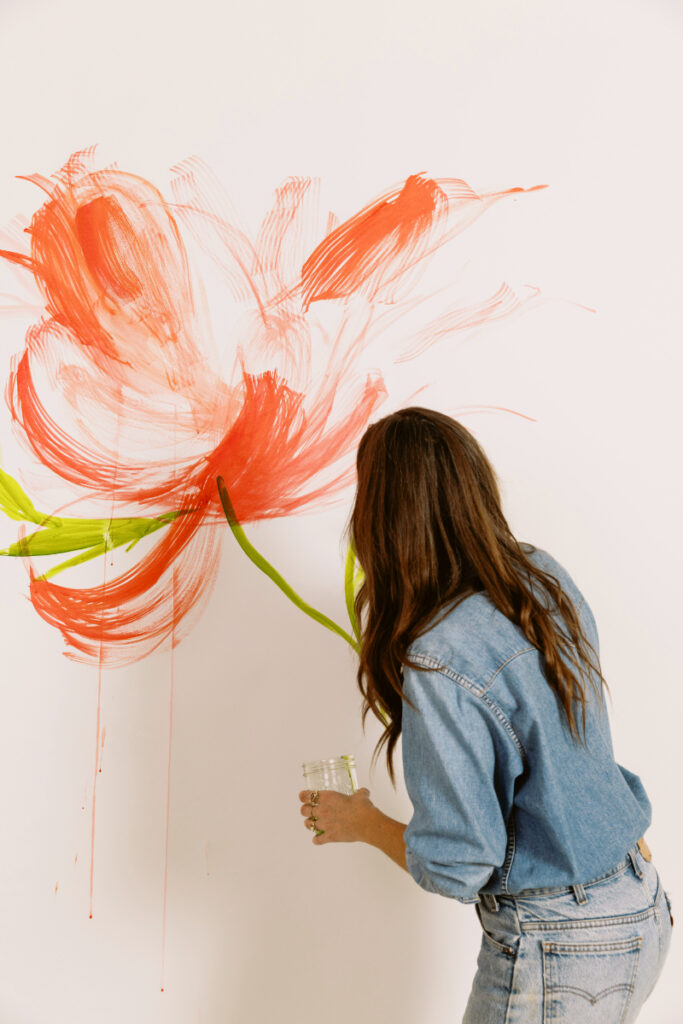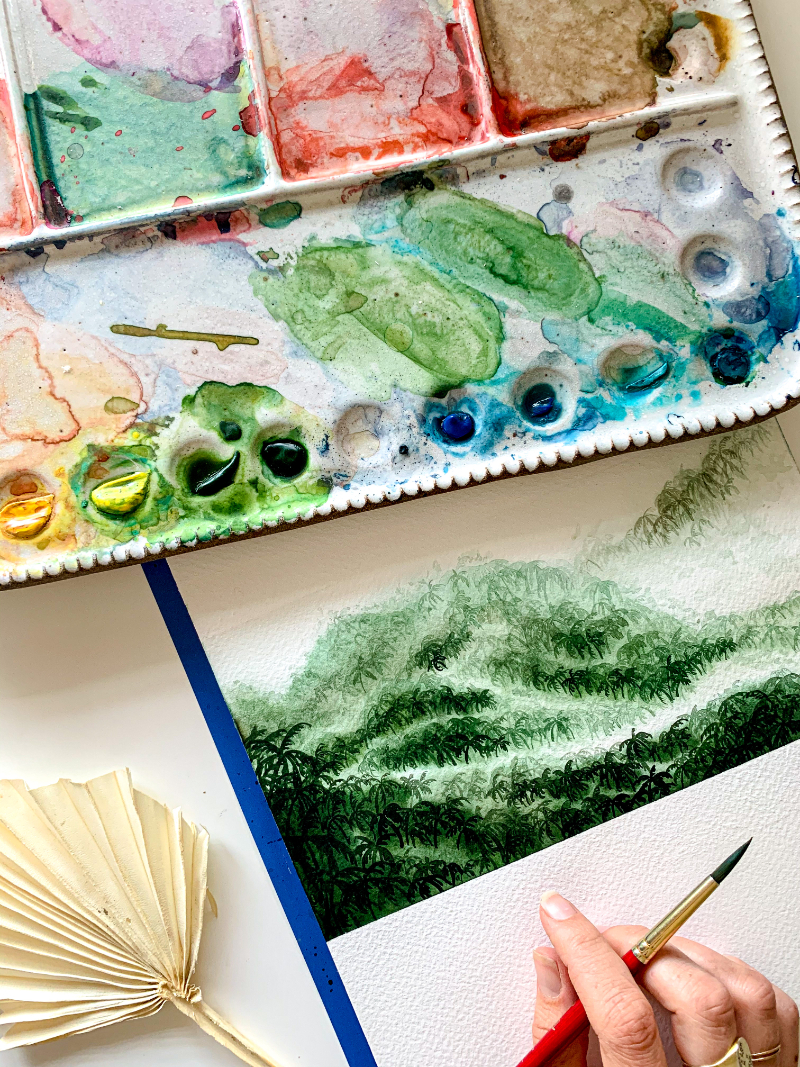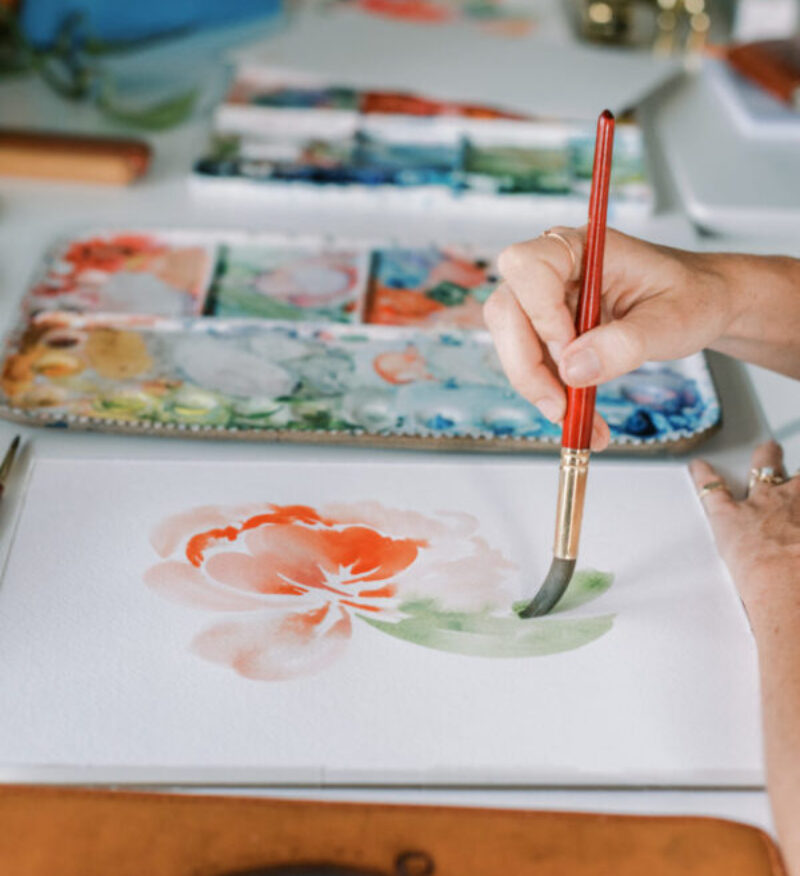If you’re a creative person—and if you’re here, I’ll bet you are—then you’ve probably wrestled with perfectionism more than once. I definitely have. When I was writing and illustrating my children’s book, perfectionism showed up in all the classic ways: second-guessing, over-editing, not knowing when to stop. Sound familiar?
I didn’t expect it to be such a big deal, honestly. I’ve been making art for years. I know how to loosen up (I even teach people how to loosen up). But something about this project brought all the pressure to the surface.
So today, I want to talk about why perfectionism is bad—especially for creatives—and how I’ve learned to let go of it, one brushstroke and one sentence at a time.
Let’s start with how perfectionism sneaks in when we’re not looking.
How Perfectionism Shows Up in Creative Work
Perfectionism doesn’t always look like obsessing over perfect lines or flawless grammar. Sometimes, it’s sneakier than that. It hides in overthinking. In delay. In the fear that nothing you make is “good enough” to finish, let alone share.
Here’s how I saw it show up while working on my book—and how I see it show up for other artists, writers, and students all the time:

1. The Endless Editing Loop
I kept rewriting and painting scenes that were already working just fine. Not because I had a better idea—because I was scared it could be better. There’s a difference between refining and spinning your wheels. (Perfectionism lives in the spinning.)
2. Fear of the Blank Page
This one hits hard. I would sit down to sketch or write and feel frozen. Like anything I started had to be amazing—or why even bother?
(Which is ridiculous, of course. But the blank page brings up big feelings, especially when you care deeply about what you’re making.)
3. Comparison Overload
It’s easy to look at someone else’s finished product and feel like yours doesn’t measure up. I’d scroll through other illustrators’ work and think, Why am I even trying? But what I wasn’t seeing? Their drafts. Their deleted pages. And their “meh” sketches. Comparison leaves out the messy middle, and that’s where most of creativity lives.
4. Struggling to Call Anything Finished
There’s always one more thing you could tweak. One more detail to adjust. One more pass before it’s “done.” But here’s what I’ve learned: if you wait for perfect, you’ll wait forever. (Letting go is a skill—and one that gets easier with practice.)
That brings me to the good stuff…

Practical Ways to Let Go of Perfectionism
You can’t just decide to stop being a perfectionist (I wish it worked like that). But you can build habits that help loosen its grip. These are the tools that helped me, especially when I felt stuck while working on my book:
1. Set Time Limits
If I gave myself unlimited time to tweak a spread or rewrite a scene, I’d still be doing it. Now I set timers. I say, “You have 30 minutes to finish this version.” Not because it has to be final, but because it has to move forward.
Time limits create momentum. And momentum beats perfection every time.
2. Work With the Mistake
Instead of tossing a “bad” sketch, I challenge myself to work with it. Can I turn that odd shape into something interesting? Can I lean into the mistake instead of fighting it?
It’s not just about saving time—it’s about building trust in your creative instincts. (Also, some of my favorite pieces started as “oops.”)
3. Use a Limited Color Palette
This one’s a classic watercolor trick, but it’s also a mindset tool. When you limit your choices, you quiet the noise. You stop asking, Is this the perfect color? and start asking, What can I do with what I have?
Fewer decisions = less overthinking.
4. Step Away and Get Distance
I can’t tell you how many times I’ve solved a creative block by walking away. When I’m too close to something, I lose perspective. So I take breaks. I prop up the painting and look at it from across the room. I view it in a mirror. Anything to shift how I’m seeing it.
Distance helps you see the whole instead of obsessing over tiny flaws.
5. Shake It Up and Play
Trying something totally different—new tools, new style, even a new creative format—can loosen the perfectionist mindset fast.
That’s actually why I created The Creativity Playbook. It’s a mix of creative prompts, exercises, and strategy tools designed to break you out of overthinking and help you actually make things again. It’s not just for watercolor—it’s for any creative who needs a nudge (or a loving kick in the pants) to stop waiting for perfect and start creating.
If you’re stuck in the “everything must be flawless” zone, this is your way out.

Why Perfectionism Is Bad for Artists (and What It Costs You)
Okay, so we’ve covered how it shows up and how to fight it—but let’s get really clear on why perfectionism is bad in the first place.
Here’s what it steals from you:
- Your voice. When you try to make something perfect, you often lose what makes it yours.
- Your momentum. You stop creating because you’re afraid it won’t be good enough.
- Your joy. Let’s be honest—perfectionism sucks the fun out of the process.
What’s worse is that perfectionism hides behind the idea of “high standards.” It sounds like discipline or professionalism. But what it really does? Keeps your work in limbo. Keeps you quiet. And, keeps your art unfinished.
When I let go of perfect, I found my rhythm again. I got playful again. I trusted myself more. And honestly, my work got better—not because it was flawless, but because it was full of life.
Letting Go Isn’t Lazy—It’s Liberating
One last thing I want to say: choosing “done” over “perfect” doesn’t mean you’re cutting corners. It means you’re trusting the process.
Creativity is messy. Art is full of trial and error. You’re allowed to grow out loud.
So if you’re stuck or scared or deep in editing limbo, try this: Limit your tools. Set a timer. Paint something bad on purpose. And see what shows up.
Sometimes, the most meaningful art comes from the pieces we almost threw away.
If you’re ready to get out of your head and back into your hands, I’ve got just the thing. My new Seashores and Ocean Life Everyday Watercolor Postcards are available for order now! They’re the perfect creative reset—25 calming, coastal designs you can paint, mail, or frame.
No pressure. No perfection. Just pure watercolor joy.













+ show Comments
- Hide Comments
add a comment